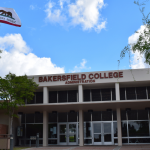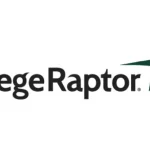We all see it and live it. The current pace of technological change is fast.
And the pace is likely to get faster, especially with the emergence of artificially intelligent (AI) technologies that are leveraging data and machine learning in new and compelling ways. If you are a higher education leader, you understand that future-proofing your institution with these technologies is critical to engaging with students and making your student support services more efficient.
Colleges and universities, beset by a multitude of constituencies, and often heavily dependent on legacy technologies, face a steep challenge: keeping up with changes in technology without reacting impulsively from innovation to innovation. It’s a balancing act – institutions need to “move their boat forward” without “rocking their boat too much”.
A hot phrase within higher education these days is “Digital Transformation” (Dx). It’s hot for good reason: it’s imperative that colleges and universities move quickly to meet the technological expectations of their students.
A key component of Dx is using technology to augment staff capacity, streamlining work-flows for students and staff and moving to a 24/7 omni-channel student engagement model. But given the factors that limit higher education’s ability to move fast, how can an institution embrace change and get more agile without disrupting their work-flows and processes too much at once?
AI tools can be a key part of the solution. Right now, they are “lighting a torch” for colleges and universities – providing many of them with a path forward that brings innovation without disrupting too many things at once. Here is how:
Getting the Most Out of Your Current Tech Stack
Your institution has (likely) invested in many technologies to power the student experience: a Student Information System (SIS), a Learning Management System (LMS), and perhaps a Customer Relationship Management (CRM) tool and/or a Financial Aid Management System (FAM). Each of these tools has data, handles work-flows, and can engage with students. But they have limitations. Affordable and nimble tools such as AI-powered chatbots, AI-powered live chat, and AI-backed two-way SMS communications can leverage the data and work-flows you already have in place – to extend the reach and impact of your incumbent systems, without having to make larger system changes.
Expanding to a 24/7 Access Model
Prior to the emergence of AI-powered technologies, if an institution was considering moving to a 24/7 access model, a significant investment would be required in a 24/7 call center experience. This is no longer necessary. AI-powered chat, for instance, can tackle 95% of Tier 1 questions, driving immediate cost savings and freeing up resources that can be more efficiently deployed elsewhere. Institutions can now move to a 24/7 environment to drive access to information and conversations with digital agents, reducing burdens on staff, and “raising the bar” for customer experience.
Providing Prospective Students a “Quick First Step” to Enrollment
Enrollment pressures are real. Whether it is the drop in the pool of college-age students or increased competition from alternative options, it is critical that institutions make it easy for prospective students to engage with them. Reducing friction and barriers to completing applications and enrollment paperwork can go a long way to maximizing the yield on the enrollment funnel. Make it easy for students to engage and route them quickly to the resources they need or assist them in completing paperwork. AI-powered chatbots can be that first line of interaction that drives engagement with a prospective student who visits your website.
Meeting Student Expectations
We live in a digital, 24/7 world. Students experience this everywhere in their lives, whether it’s interfacing on social media, seeking information online or making a purchase. They expect the same of their college or university. All students have a mobile device, which serves as their primary outlet for important interactions. It is their preferred method of communication, they way the prior generation preferred email over snail mail. AI-powered technologies such as chatbots and “text campaigns” can enable your institution to drive greater engagement with students on their mobile devices, saving staff time and making students happier. These technologies can tap into the data from your other systems to have more personalized, detailed and specific conversations with your students across multiple channels.
The Wrap
Change is at foot. Actually, the change has been happening for quite a while. Higher education, with a lot of investment tied up in legacy systems and limited by bureaucracy, has at times struggled to be agile and embrace change. AI-powered tools such as chatbots, live chat, and SMS text campaigns are an affordable way to transform digitally to a 24/7 access model without creating too much disruption all at once. These tools are proving that they can co-exist within a broader technology ecosystem to measure engagement, drive personalized engagement, generate greater ROI for all other technologies being used, and future-proof your institution.















